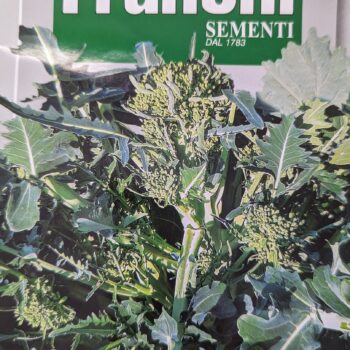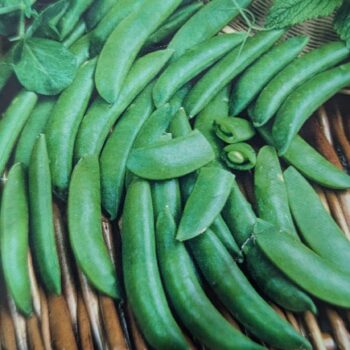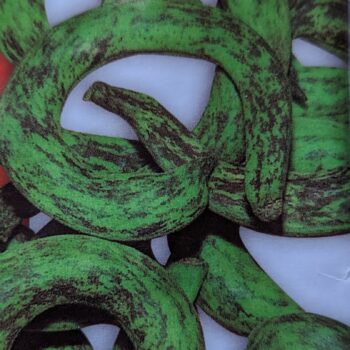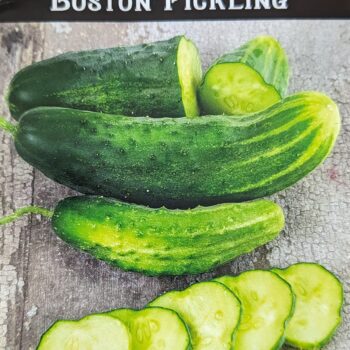I have found that creating a system of organization for seed starting helps not only with timely sowing, but with time management. First start with listing the plants that you wish to grow. Greens generally like cooler growing temperatures: these are ideal for spring and fall sowing. Fruit bearing crops generally prefer warm temps and a long growing season. This latter group ought to be started indoors, well before the last frost date. Once you’ve organized what you want to grow, you can create a schedule for yourself. What follows is the list of veg and flowering plants that we are growing on our farming plots.
Additional information you will need to know:
- Average last frost date
- Average first frost date
- Number of days to harvest for your crop
You can easily get this information online. For example, in our area (western North Carolina) there is only a 10% chance of overnight temperatures of 36 F by May 14th, so I’ll wait until then to put out tender crops. However, cool season crops can be planted in spring as soon as the ground can be worked. In our area, we can plant as early as April 18th. We have an 80% chance of having 32 F by October 30th.
Having this information, can help you plan and increase the probability of successful harvests. For example, our warm weather growing season, based on these data, is 175 days long. Our cool weather growing season is 203 days long.
To maximize planting success, we stagger our spring sowing dates every two weeks. This not only protects your crop, but also minimizes your workload!
The number of days to harvest for a cross-section of crops we’re planning:
- Swiss Chard: 28-42 days
- Mesclun Greens: 30-40 days
- Sugar Snap Peas: 42-56 days
- Beets, Cylindra: 55-65 days
- Tomato, Black Strawberry: 60 days
- Runner Beans, Blauhilde: 65 days
- Bush beans, Anellino di Trento: 60-75 days
- Sugar Rush Peach Pepper: 60-80 days
- Carrots, Black Nebula: 75-80 days
- Tomato, Indigo Blue Chocolate: 80 days
- Cherokee Purple Tomatoes: 80-90 days
- Candy Roaster Squash: 100 days
- Connecticut Field Pumpkin: 110 days
Consider growing short season crops (that are harvested in 60-80 days), both spring and fall. Sow cool season crops spring or fall. No matter where you live, you can grow year-round, indoors. When days grow shorter and cooler, consider shifting your grow to indoor hydroponics. If you incorporate indoor growing, you can potentially harvest crops year-round (more on that in a future post)!
Cool weather crops to plant spring or fall
Except for the root forming crops (beets, carrots, radishes), these crops lend themselves to indoor hydroponic culture. Some members of the Apiaceae (Umbels) such as parsley and carrots benefit from pre-soaking for 24 hours prior to sowing. Cole crops (broccoli, kale, Brussels sprouts, cabbage) are magnets to caterpillars including the imported cabbage -worm and cabbage looper. When growing out-of-doors, treat young plants with a protective application of BT (Bacillus thuringiensis) or Azadirachtin.
| Broccoli Rabe |
| Broccoli, Chinese |
| Broccoli, Early Purple Sprouting |
| Broccoli, Sprouting |
| Escarole Bionda Cuore Pieno |
| European Mesclun |
| Kale Dazzling Blue |
| Beets, Cylindra |
| Lettuce, Tennis Ball |
| Carrot, Black Nebula |
| Carrot, Koral |
| Carrot, Kyoto Red |
| Carrot, Pusa Asita Black |
| Carrot, St. Valery |
| Radish Japanese Wasabi |
| Rhubarb Chard |
| Swiss Chard, Five Color |
| Snap Peas |
Warm Weather Crops to Start Indoors
Start these crops as early as February or March, depending on when you plan on setting your plants out. This group of plants benefit from bottom heat and even moisture. Placing a plate glass or clear plastic over the planted seed will increase germination success. Keep an eye out for tomato or tobacco hornworms, which can strip your plants clean of foliage just when they are getting well established. Make applications of BT or Azadirachtin to solanaceous crops (tomatoes, peppers, pepino melon, potatoes, and eggplants).
| Cardoon Gobbo di Nizza |
| Pepino Melon |
| Pepper Buena Mullata |
| Pepper Purple Jalapeno |
| Pepper Purple UFO |
| Pepper Sugar Rush Peach |
| Pepper, Datil |
| Pepper, Jimmy Nardello |
| Pepper, Zulu |
| Pepperoncino Cilielgia Piccante |
| Tomato, Black Strawberry |
| Tomato, Bonnie Best |
| Tomato, Cherokee Purple |
| Tomato, Indigo Blue Chocolate |
| Basil, Cardinal |
Warm Weather Crops for Direct Sowing
These crops are directly sown in the garden or field. This is the simplest and easiest way to garden. Watch for Mexican bean beetle on your bean plants, which will skeletonize the developing leaves. For bean beetles, make an application of pyrethrum. Look out for wilting on winter squash vines, indicative of squash vine borer. Treat early, after the vines put out their first true leaves. Use BT or an Azadirachtin such as AzaSol to protect squash vines.
| Bean Anelino di Trento |
| Bean Super Marconi |
| Bean, Purple Yardlong |
| Beans Blauhilde |
| Cucumber China Jade |
| Cucumber Dar |
| Cucumber, Boston pickling |
| Pumpkin, Cinderella |
| Pumpkin, Connecticut Field |
| Squash Marina di Chioggia |
| Squash Potimarron |
| Squash, Acorn |
| Squash, Blue Hubbard |
| Squash, Candy Roaster |
| Squash, Golden Hubbard |
| Squash, Kakai |
| Squash, Lady Godiva |
| Squash, Moranga |
| Squash, Musquee de Provence |
| Squash, Peanut |
| Squash, Waltham Butternut |
| Sugar Pumpkin |
| Sunflower, Wildlife |
Flower Seeds for Direct Sowing
| Love-Lies-Bleeding |
| Marigold. Disco Mix |
| Spider Flower Mix |
| Sunflower Mixture |
| Sweet Alyssum |
| Tansy |

Create your own gardening calendar. This will help guide your gardening tasks and help to keep your efforts on task! What follows is a sample garden calendar that you can use and modify to fit your own needs.
A Sample Gardening Calendar
| Month | Varietal | Task | Notes |
| January | Mesclun greens
Lettuces Arugula Broccoli rabe Endive Kale Basil Parsley Other herbs |
Sow seeds indoors | Grow hydroponically for continued harvests |
| February | Tomatoes
Peppers Eggplant |
Sow seed indoors | Apply bottom heat & maintain humidity (use clear plastic or plate glass) |
| March | Snap Peas
Beets Carrots Radish |
Direct Sow | Trellis peas;
Pre-soak carrot seeds; sow in row with radish |
| April | Mesclun greens
Lettuces Arugula Broccoli rabe Kale |
Direct sow | Sow every two weeks; use a floating row cover for Cole crops or apply BT or Azadirachtin for caterpillars |
| May | Tomatoes
Peppers Eggplant; Pole beans Bush beans Cucumbers |
Plant out
|
Harden off plants prior to planting out; apply cutworm collars
|
| Pole beans
Cucumbers |
Direct sow | Trellis pole beans, cucumbers | |
| Amaranth
Cleome Marigolds Sunflowers Tansy Winter Squash |
Direct sow | Apply BT or Azadirachtin to winter squash when leaves first emerge to protect against Squash vine borer | |
| August
|
Snap Peas
Beets Carrots Radish Bush beans |
Direct Sow | Trellis peas;
Pre-soak carrot seeds; sow in row with radish; Sow fall bush bean crop 60 days before first frost |
| Mesclun greens
Lettuces Arugula Broccoli rabe Kale |
Direct sow | Sow every two weeks; use a floating row cover for Cole crops or apply BT or Azadirachtin for caterpillars | |
| October
November December |
Mesclun greens
Lettuces Arugula Broccoli rabe Endive Kale Basil Parsley Other herbs |
Direct sow indoors | Grow hydroponically for continued harvests |
The calendar is designed for a continuous harvest. Of course, grow what you like! For instance, you may want to include potatoes, sweet potatoes, onions, and garlic in your garden plan. The amount to grow is based on your time and available space, and what you prefer eating. Gardens are as individual as the gardener tending it: So, go for it! And above all, have fun!
Join us next week as we get into more gardening topics for 2024.
~ Signing off for now, Joe












